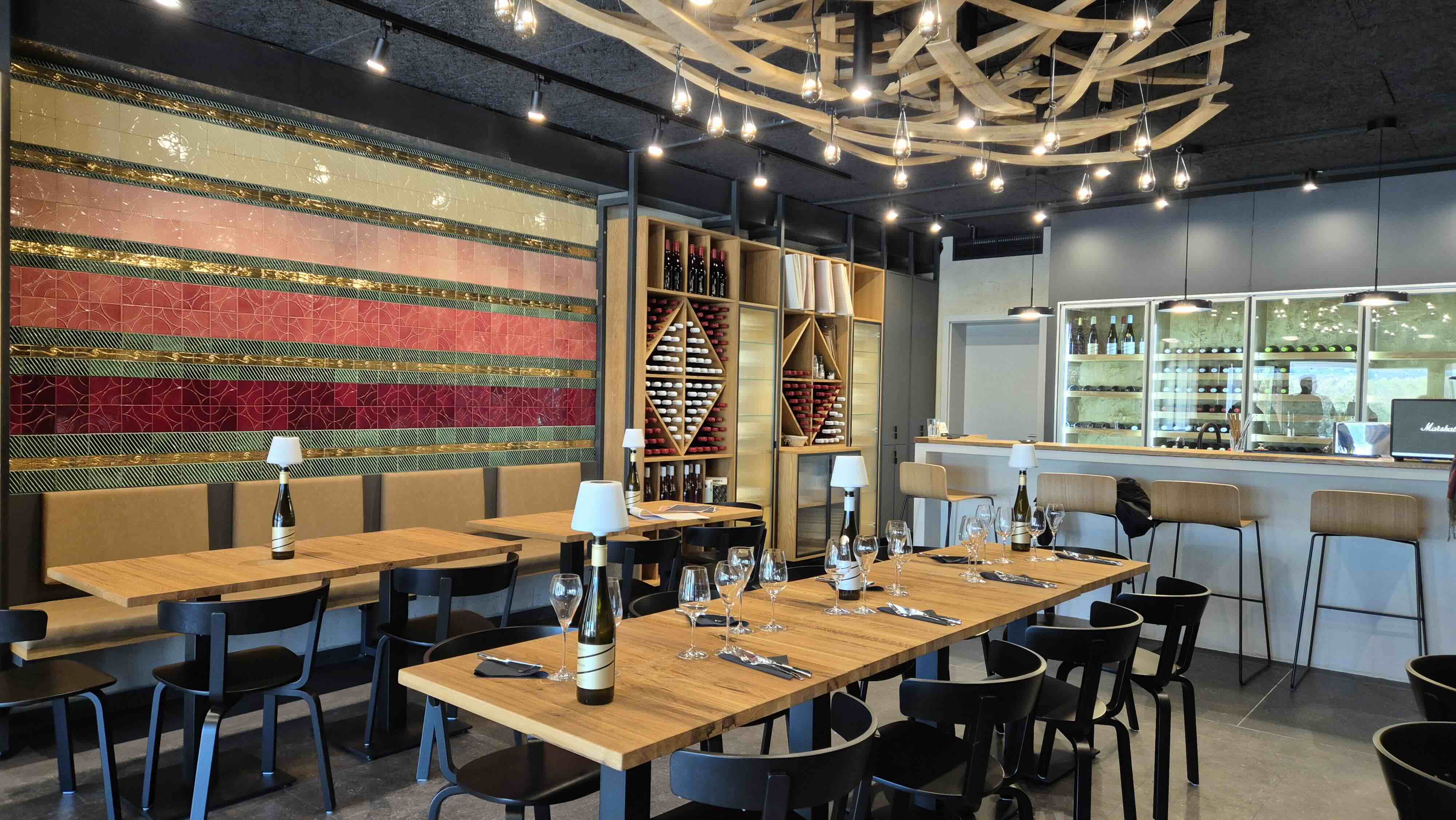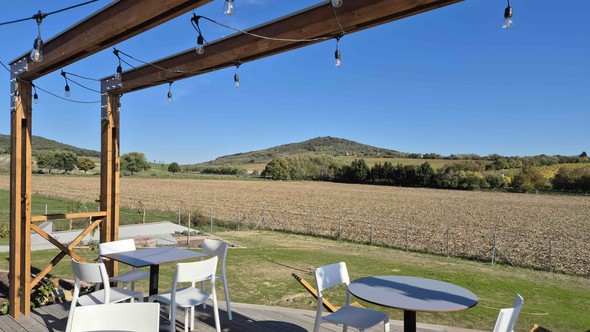László Bakos and wife Marianna had never imagined working with wine or cultivating grapes before they moved to Nadap. Laci is from Székesfehérvár and Marianna from Békéscsaba and Marianna missed the countryside while they were living in Budapest, so 12 years ago, they upped sticks and moved the family to the fresh air and beautiful landscape near Lake Velence.
Small beginnings
Several years later, however, they caught the bug while tasting with the king of indigenous varieties, József Szentesi, and in 2016 bought a 35-hectare plot of land as an investment for their retirement, never dreaming that they would soon be cultivating that land themselves, as the land was being used by a tenant. However, as COVID arrived, they decided to try their hand at viticulture and winemaking themselves. László enrolled in a viticulture and winemaking course at the University of Horticulture, and they started to cultivate a small plot of Riesling themselves as an experiment.

When the harvest arrived, they realised they needed somewhere to make the wine and as they had a small cottage in neighbouring Sukoró, they converted it into a winery, with a small guesthouse at the front. They renovated the building authentically but created a modern winery inside. Laci’s day job came in handy here, as he is an architect. Thankfully some local winemaking expertise was on hand too, with Gábor Nagy, who runs his own family winery in Pázmánd, lending a hand with making the first wines in 2020 from the 40-year-old Riesling vines. They made three different experimental wines, which are still drinking beautifully today – we were lucky enough to try them. They then bought two more small plots bringing the total to over a hectare.

New vines amid the beauty of nature
Laci and Marianna soon found themselves working more closely with their larger investment when the tenant left, and they had to decide what to do with 20 hectares of vines and 14 hectares of arable land. The vines are on the edge of Nadap between Meleg Hill and Csúcsos Hill, with Lake Velence shimmering in the distance, creating an excellent microclimate for viticulture. The Swabians who settled the region in the past knew this and also planted their vines here in the calcareous soil overlaying the ancient granite bedrock. This picturesque setting was nearly lost when it was rumoured that Hungaroring would be built here, but fortunately, this never became reality, allegedly due to a former Defence Minister who used to hunt here. And there are still plenty of wild animals here, as we witnessed when we caught sight of a large stag beyond the fence that the couple have had to erect to protect the vines from deer and wild boar.
Indigenous black grapes
Doubtless inspired by József Szentesi, one of whose vineyards their newly opened wine bar overlooks, Laci and Marianna decided to take a gamble on some rare old Hungarian varieties, and have planted black varieties Laska, Tihanyi Kék and Tarcali Kék along with Kadarka and Kékfrankos – just to have some security, says Laci – and white variety Szeremi Zöld. As the first three varieties are so rare, they now have the largest plantings of them in the country, even though they have only planted one hectare each of Laska and Tihany Kék and 0.5 hectares of Tarcali Kék! So, it shows they truly believe in them.

Refreshment for passing cyclists
Not satisfied with simply producing wine, Laci believes you should also sell an experience, so they have now added a wine bar, offices and tastefully furnished guest apartments in two buildings in Nadap. The wine bar boasts a terrace with a fantastic view over to Csúcsos Hill, and as the Budapest-Balaton bike path runs directly in front of the buildings, it’s a perfect place for cyclists to stop off for refreshment, or even base themselves and explore the area. The interior of the wine bar would not be out of place Hungary’s trendy capital, Budapest, with a beautiful ceramic wall in the colours of four styles of wine – white, rosé, siller and red – representing the partially terraced Tihanyi Kék vineyard and a custom-designed lighting fixture made from barrel staves – both a real talking point. The couple believe in supporting the work of contemporary artists as well as other local producers. As their own range of wines is still very limited, they also serve sparkling wines and Kadarka from Szentesi and wines produced by Gábor Nagy, along with a cheese and charcuterie platter showcasing local produce.

A new winery for the new wines
Once the newly planted vines are productive, the small cellar in Sukoró will no longer suffice, so the Bakoses are planning a new winery in the middle of the vineyards with a restaurant and event space. Construction will begin soon.
They currently only harvest Riesling from their vineyards, making both an unoaked and oaked version each year, and buy in grapes for their rosé and juicy, fresh cherry-scented Kékfrankos siller, a light red wine that goes down a treat slightly chilled. Their Riesling has proved very successful, and a short vertical shows the evolution of their experience, right from the first unfiltered wine, made using a basket press in 2020 that was only enjoyed by friends, but still managed to be named “best white wine around the lake “at a local wine competition. From 2021, they have used only their own selected yeast, while the oaked Riesling spends 6-12 months, depending on the vintage, in Kádár Hungary Larus barrels. They now have a pneumatic press as well as two recently purchased amphoras. They set the bar high even with their first winemaking attempts in 2020 and then picked up a gold at the Vinagora International Wine Competition for their oak-aged 2021 Riesling. So, I think we can expect great things in the future too.
At the moment, they do all the viticultural work themselves, while Laci makes the wines, a total of 2,000 bottles a year. No doubt things will hot up when the old Hungarian varieties start producing and I look forward to seeing their progress, as they would also like the new vines to be farmed organically. Given the impressive results so far, I’m sure they will succeed in whatever they do. I’ll certainly be back to try the red wines as soon as they are ready.






